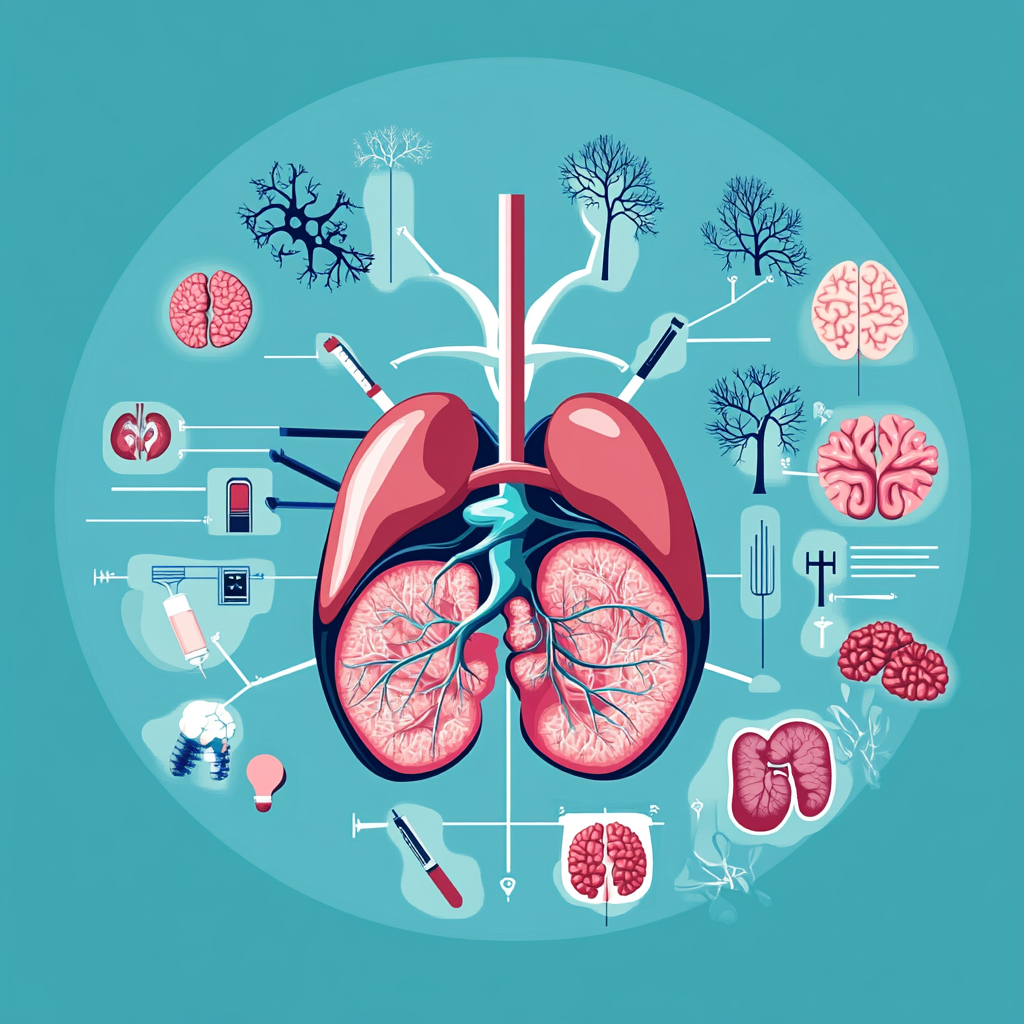Flying Against the Clock: Managing Time Constraints in Organ Air Transport
Time constraints in organ air transport are crucial. Delays can jeopardize organ viability and transplant success. This article explores the factors and advanced solutions to minimize these delays and improve outcomes.
Key Takeaways
Minimizing cold ischemia time is crucial for successful organ transplantation, necessitating rapid and efficient organ transport methods.
Advanced technologies, including drones and air taxis, are transforming organ transport by enabling quicker delivery times and enhancing the geographic reach of organ allocation.
Effective coordination among stakeholders and streamlined regulatory processes are essential for optimizing the logistics of organ transport and improving patient outcomes.
The Critical Nature of Time in Organ Transport

In the world of organ transplantation, time is not just money—it’s life. The organ transplantation process hinges on the speed and efficiency of organ transport, where minimizing cold ischemia time is paramount. Cold ischemia time refers to the period an organ remains preserved in a cold state after being removed from a donor and before implantation into a recipient. Research shows that reducing this time is crucial for maintaining organ viability and successful transplants.
Advanced technologies are stepping in to address this critical need. For instance, drones have emerged as a potential solution to minimize delivery times, especially in congested urban settings, thus improving the acceptance rates among transplant surgeons by reducing cold ischemia time.
These innovations, capable of transporting organs for over six hours, not only speed up transportation but also expand the geographic reach of organ allocation, increasing the likelihood of successful transporting human organs.
Factors Contributing to Time Constraints
Several factors contribute to the time constraints in organ transport, each adding layers of complexity to an already challenging process. From the availability of donors and the readiness of recipients to logistical hurdles and unforeseen delays, these elements collectively determine the efficiency and success of organ transplantation.
Recognizing these factors helps address the critical time intervals that can mean the difference between life and death.
Donor Location and Availability
The geographical location of donors significantly impacts the speed and efficiency of organ transport. In regions with fewer transplant centers, organs must often be transported over greater distances, increasing the urgency and complexity of the logistical process. Geographical disparities can lead to heightened urgency in certain areas, making timely organ allocation and retrieval a critical challenge.
Moreover, the availability of donors and the timing of their donation play pivotal roles. The demand for human organs such as kidneys and livers often exceeds supply, necessitating immediate action once a viable organ is identified.
Transplant centers must quickly coordinate with hospitals and recipients to ensure that the organ remains viable and the transplantation centers process proceeds without delay. Such coordination is crucial for keeping organs viable and ensuring successful transplants.
Recipient Readiness and Coordination
Recipient readiness and effective coordination are equally important for minimizing delays in organ transport. Effective communication between healthcare teams ensures that organ recipients are prepared for surgery the moment the organ arrives. This level of coordination requires seamless interaction among transplant centers, organ procurement organizations, and regulatory bodies to streamline the organ transplantation process.
Improving coordination may involve better training for logistics providers to ensure timely organ delivery, thereby enhancing overall transport efficiency. Simplifying regulations, like reducing the review time for organ offers, can significantly improve organ utilization and minimize delays.
Streamlined consent procedures further cut waiting times, making the process more efficient.
Logistical Challenges and Delays
The logistical process of organ transport is fraught with challenges that can cause significant delays. Regulatory and compliance issues often complicate logistics, leading to unforeseen delays that can jeopardize the timely delivery of organs. Mechanical delays, traffic, accidents, and adverse weather conditions are additional factors that can disrupt the smooth transport of organs.
Adopting standardized protocols can help healthcare providers and logistics firms overcome these logistical challenges by minimizing procedural variability. The high level of logistical complexity required for time-critical organ transport necessitates careful coordination and management of multiple factors in the logistics process. An efficient transport chain with compliant performance parameters is crucial for successful organ transport and, ultimately, saving lives.
Advanced Air Mobility Solutions

Advanced air mobility solutions are paving the way for significant improvements in the efficiency and speed of organ transport. Integrating technologies like drones and air taxis unlocks quicker, more direct routes, revolutionizing organ transportation.
Drones for Short-Distance Transport
Drones have become a game-changer for short-distance organ transport, especially in urban settings where time is critical. These unmanned aerial vehicles can carry loads up to 180 kg, making them suitable for transporting vital organs like hearts and kidneys within city environments. Their ability to navigate congested urban landscapes ensures rapid delivery, significantly reducing transit times and improving outcomes for patients awaiting transplants.
Innovative solutions like drones are essential for enhancing organ transport, especially in scenarios where traditional methods may face delays due to traffic or other urban challenges. Advanced air mobility makes the organ transplantation process more efficient, ensuring organs reach recipients in optimal condition.
Air Taxis for Longer Distances
Air taxis present a promising solution for bridging gaps in organ transport over longer distances. These aircraft provide quicker air transport options compared to conventional methods, facilitating the timely delivery of organs across regions. Technologies like the ALIA air taxi are designed to offer safe, efficient, and environmentally friendly transport for organs, potentially revolutionizing long-distance organ delivery.
By enhancing the logistics of organ transport, air taxis can significantly improve lung transplantation outcomes. Their swift and efficient long-distance coverage ensures organs remain viable and reach recipients promptly, ultimately saving lives.
Real-Time Tracking and Monitoring Technologies
Advanced tracking devices can monitor critical environmental factors, demonstrating how temperature affects organ viability, ensuring that organs are kept in optimal conditions during transit These advancements offer visibility into the shipment’s location and conditions at every stage, significantly reducing delays and enhancing accountability.
GPS and Environmental Sensors
Advancements in GPS and environmental sensors have revolutionized the safety and reliability of organ transport. Advanced tracking devices can monitor critical environmental factors such as temperature, humidity, and motion, ensuring that organs are kept in optimal conditions during transit. These devices can also measure various biophysical properties of organs, providing comprehensive condition monitoring that enhances the safety of organ transport.
Innovative monitoring devices and logistics software have decreased the time required for organ transport, improving the efficiency of transplant procedures. Using these technologies, healthcare providers can ensure safe and efficient organ transport, ultimately improving patient outcomes.
Automated Communication Systems
Automated communication systems enhance organ transport by streamlining interactions between transport personnel and medical teams. These systems enable rapid responses to transport-related issues, minimizing delays and ensuring the timely delivery of organs. Instant alerts facilitate quick corrective actions, which are essential for maintaining organ viability during transport.
Establishing a centralized communication platform for all parties involved ensures quicker decision-making and prompt resolution of any issues that may arise during transport. This approach helps maintain the viability of organs and improves the overall efficiency of the organ transplantation process.
Did you know that you can get from Manhattan to JFK in under 5 minutes without driving?
Blade offers seamless helicopter transfers from our West 30th Street Lounge in Manhattan to JFK Airport in just 5 minutes from $195 per seat.
Skip the traffic and ditch the stress with Blade's year-round airport service.

Case Studies and Success Stories

Real-world examples of successful organ transport highlight the impact of innovative strategies and effective coordination. These success stories underscore the need for continual improvement in logistical coordination and technology integration to enhance future transplant outcomes.
Rapid Response Teams in Action
Rapid response teams are specialized groups that play a crucial role in managing organ transports to minimize delays. Last year, the University of California, San Francisco Medical Center set a record with 95 lung transplants, demonstrating the success of effective coordination and rapid response. These teams are tasked with ensuring that organs remain viable for transplantation by intervening promptly and efficiently.
The timely actions of rapid response teams significantly enhance the overall success rate of organ transplantation. By ensuring the quick and efficient delivery of organs, these teams help save lives and improve patient outcomes.
Innovative Use of Technology
Cutting-edge technology plays a transformative role in improving the efficiency of organ transport. Drones have proven capable of safely transporting organs, with successful flights recorded for both lungs and kidneys in urban environments. These technological advancements address logistical challenges and minimize transport times, ensuring that organs reach their recipients promptly.
The integration of drones and rapid response teams represents a significant advancement in organ transport, ensuring timely delivery even under urgent conditions. These innovations are essential for enhancing the efficiency of the organ transplantation process and ultimately saving more lives.
Recommendations for Improving Organ Transport Efficiency

To enhance the efficiency of organ transport, several key recommendations can be implemented. These include streamlining regulatory processes, investing in advanced technologies, and enhancing coordination among stakeholders.
Adopting these strategies can significantly improve the organ transplantation process, ensuring timely and successful transplants.
Streamlining Regulatory Processes
Streamlining regulatory processes is essential for reducing delays in organ transport. Current FAA regulations stipulate a 14-hour work shift and 10 hours of rest prior to flights for organ transport missions. Assessing these regulations for flexibility can allow quicker response times without compromising safety, facilitating timely transportation of organs and saving lives.
Optimizing regulatory frameworks is crucial for efficient logistics in organ transport. Reducing bureaucratic hurdles and enabling more flexible regulations can expedite the transport process, improving the chances of successful transplants.
Investing in Advanced Technologies
Investing in advanced technologies is essential for improving the efficiency and reliability of organ transport operations. Real-time condition tracking is essential for monitoring factors such as temperature, humidity, light exposure, and shock events during transit. Technologies like Tive trackers offer advanced condition monitoring and instant alerts, which are vital for time-critical shipments.
The development of air taxis could also facilitate the establishment of dedicated transportation networks for organs, reducing overall transit times and improving the efficiency of organ transport. Investing in these technologies can significantly improve the organ transplantation process, ensuring timely and successful transplants.
Enhancing Coordination Among Stakeholders
Effective communication and collaboration among all parties involved in organ matching and transport logistics can significantly improve the efficiency of the entire logistics chain. Rapid response teams have been crucial in achieving timely organ delivery, often utilizing specialized training for emergency situations. Effective communication and collaboration among all parties involved in the organ transport process can significantly improve the efficiency of the entire logistics chain.
Scheduling flight crews for organ transplant charters can be challenging due to the short notice for missions and legal work shift requirements. Improving coordination among stakeholders, including healthcare professionals, logistics providers, and regulatory bodies, can address these challenges more effectively.
This coordinated approach ensures that organs are transported in a timely manner, maintaining their viability and improving patient outcomes.
Did you know that you can get from Manhattan to JFK in under 5 minutes without driving?
Blade offers seamless helicopter transfers from our West 30th Street Lounge in Manhattan to JFK Airport in just 5 minutes from $195 per seat.
Skip the traffic and ditch the stress with Blade's year-round airport service.

Bottom Line: Time Constraints in Organ Air Transport
Time is of the essence when it comes to organ transport. Minimizing transport time and ensuring the viability of organs are critical for successful transplants. The integration of advanced technologies, such as drones and air taxis, along with real-time tracking and monitoring systems, has significantly improved the efficiency and reliability of organ transport. These innovations, combined with effective coordination among stakeholders, play a pivotal role in overcoming logistical challenges and reducing delays.
Looking forward, the continued investment in advanced technologies and the optimization of regulatory processes will be essential for further enhancing the efficiency of the organ transplantation process. By adopting these strategies, we can ensure that more organs reach their recipients in optimal condition, ultimately saving more lives. The journey of an organ from donor to recipient is complex, but with the right innovations and collaboration, it can be made more efficient and effective.
FAQs about Time Constraints in Organ Air Transport
Why is minimizing cold ischemia time so important in organ transport?
Minimizing cold ischemia time is essential as it preserves organ viability, significantly enhancing the likelihood of a successful transplantation.
How do drones improve the efficiency of organ transport in urban areas?
Drones enhance organ transport efficiency in urban areas by swiftly navigating congested environments, thereby minimizing transit times and improving transplant outcomes for patients.
What role do rapid response teams play in organ transport?
Rapid response teams play a critical role in organ transport by managing logistics to minimize delays, thereby ensuring organ viability for transplantation and improving success rates. Their efficient coordination is vital for effective organ recovery and delivery.
How can real-time tracking and monitoring technologies benefit organ transport?
Real-time tracking and monitoring technologies enhance organ transport by ensuring visibility of the shipment's location and conditions, which ultimately reduces delays and improves accountability. This timely information is crucial for preserving organ viability and improving transplant outcomes.
What are some recommendations for improving the efficiency of organ transport?
To improve the efficiency of organ transport, it is crucial to streamline regulatory processes, invest in advanced technologies, and enhance coordination among all stakeholders involved. Implementing these measures can significantly facilitate timely and successful transplants.
Disclaimer:
Please be aware that the content on this page has been generated by using artificial intelligence language models and may contain errors, inconsistencies, or outdated information. It is provided as-is without any warranties or guarantees of accuracy. We strongly recommend using this content as a starting point for further research. We disclaim any liability for damages or losses resulting from the use or reliance on this content.